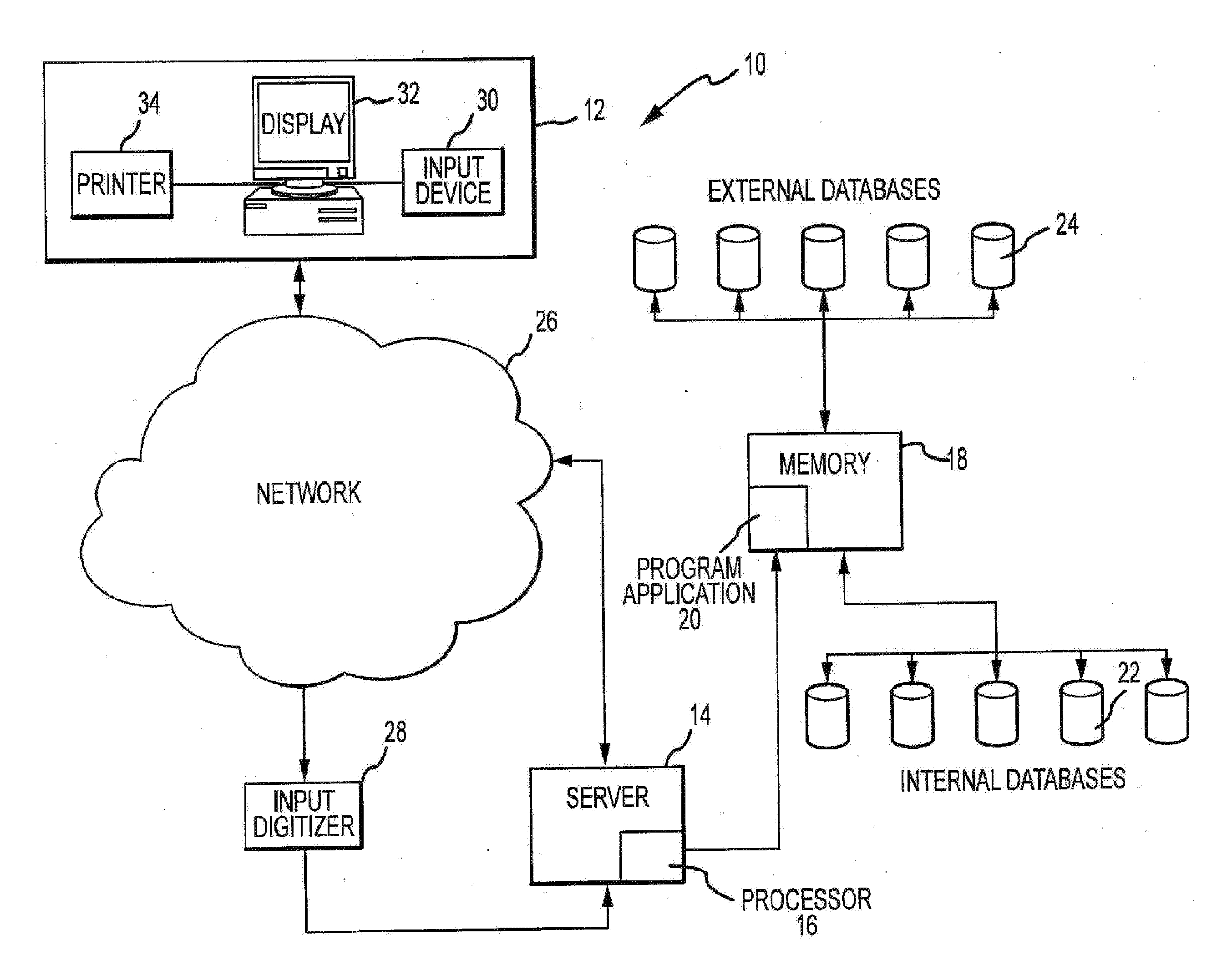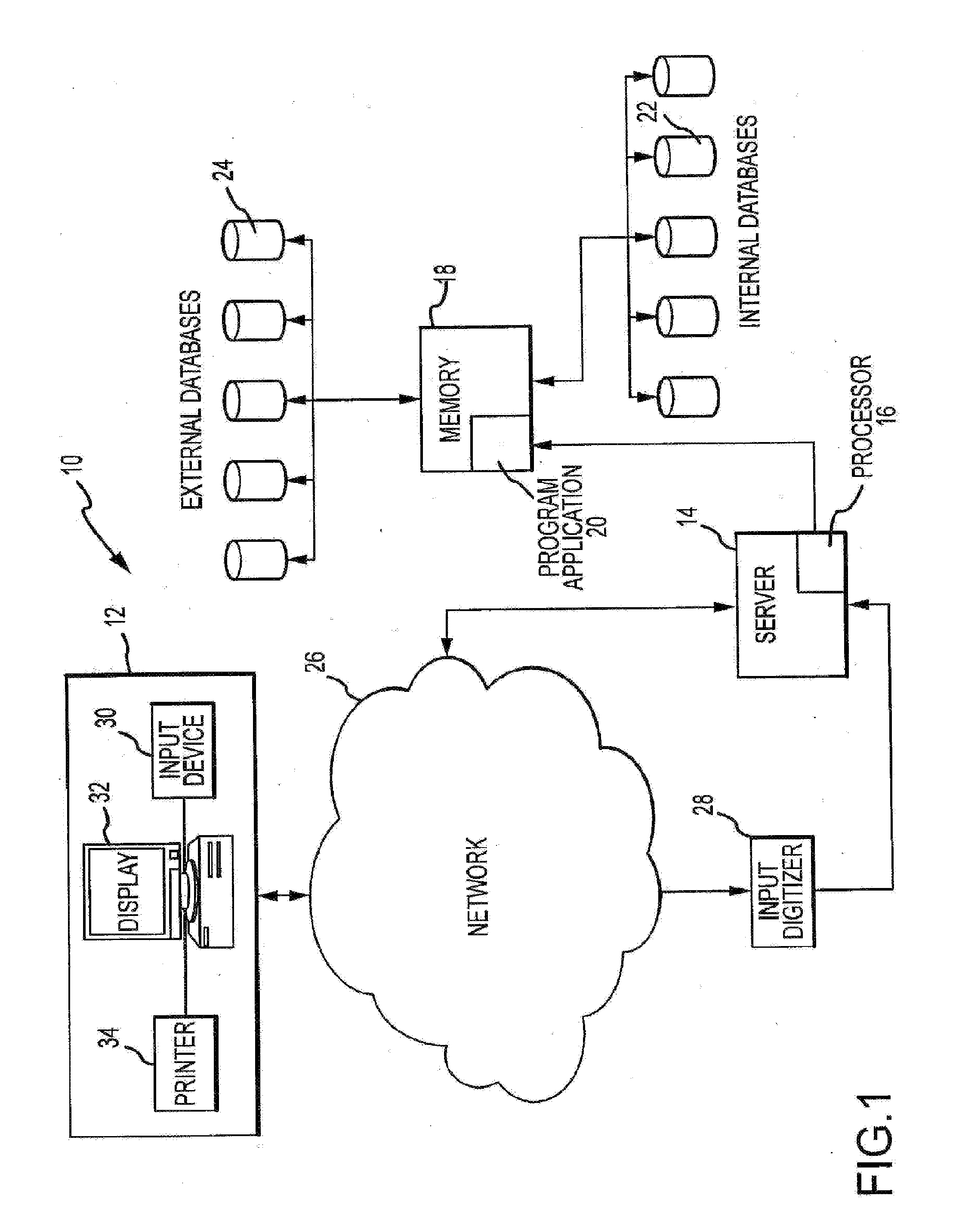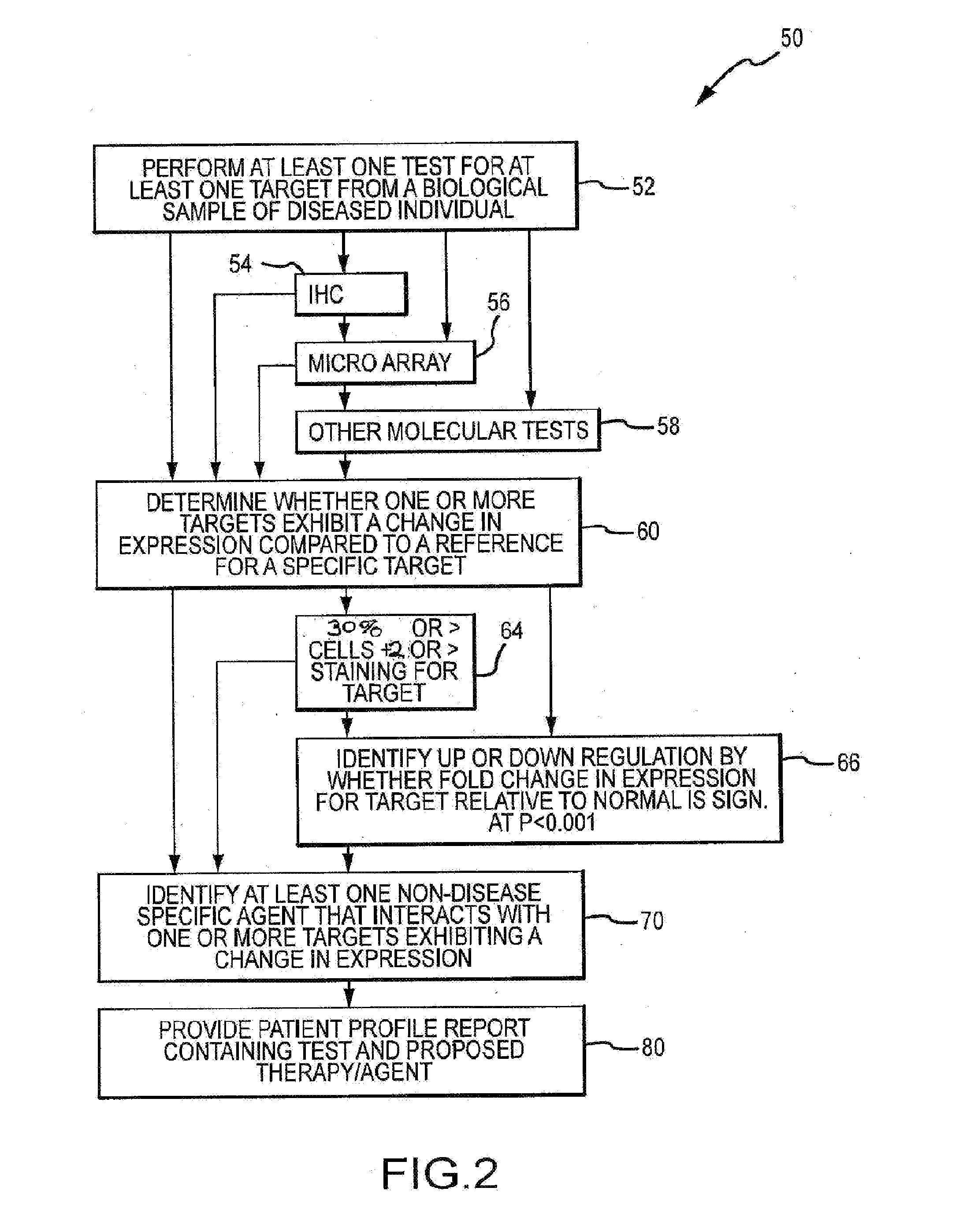Molecular profiling for cancer
a cancer and molecular technology, applied in the field of molecular profiling for cancer, can solve the problems of metastatic or refractory cancer eventually running out of treatment options, and the individual's treatment regimen is disease specific and not widely pursued, and the effect of reducing the risk of cancer survival
- Summary
- Abstract
- Description
- Claims
- Application Information
AI Technical Summary
Benefits of technology
Problems solved by technology
Method used
Image
Examples
example 1
Molecular Profiling to Find Targets and Select Treatments for Refractory Cancers
[0429]The primary objective was to compare progression free survival (PFS) using a treatment regimen selected by molecular profiling with the PFS for the most recent regimen the patient progressed on (e.g. patients are their own control) (FIG. 35). The molecular profiling approach was deemed of clinical benefit for the individual patient who had a PFS ratio (PFS on molecular profiling selected therapy / PFS on prior therapy) of ≧1.3.
[0430]The study was also performed to determine the frequency with which molecular profiling by IHC, FISH and microarray yielded a target against which there is a commercially available therapeutic agent and to determine response rate (RECIST) and percent of patients without progression or death at 4 months.
[0431]The study was conducted in 9 centers throughout the United States. An overview of the method is depicted in FIG. 36. As can be seen in FIG. 36, the patient was screene...
example 2
Molecular Profiling System
[0473]Molecular profiling is performed to determine a treatment for a disease, typically a cancer. Using a molecular profiling approach, molecular characteristics of the disease itself are assessed to determine a candidate treatment. Thus, this approach provides the ability to select treatments without regard to the anatomical origin of the diseased tissue, or other “one-size-fits-all” approaches that do not take into account personalized characteristics of a particular patient's affliction. The profiling comprises determining gene and gene product expression levels, gene copy number and mutation analysis. Treatments are identified that are indicated to be effective against diseased cells that overexpress certain genes or gene products, underexpress certain genes or gene products, carry certain chromosomal aberrations or mutations in certain genes, or any other measureable cellular alterations as compared to non-diseased cells. Because molecular profiling i...
example 3
Workflow for Identifying a Therapeutic Agent
[0482]FIG. 44 illustrates a diagram that outlines a workflow for identifying a therapeutic agent by analyzing a sample from an individual with breast cancer (441). The sample is cut into a number of slides (442) and stained with hematoxylin and eosin (H&E) (443). The stained slides are read by a pathologist (444) to determine what panel of markers to test, e.g., whether to analyze the sample using a complete biomarker panel analysis or a tumor-specific biomarker panel analysis, e.g., for breast cancer sample analysis (445). The pathologist also identifies sections (446) for DNA microarray analysis (447), FISH analysis, e.g., to measure HER2 expression (448), or mutational analysis via sequencing (449). DNA microarray analysis can be performed on a whole genome scale, with focus on genes that are informative for therapeutic treatment options, including at least ABCC1, ABCG2, ADA, AR, ASNS, BCL2, BIRC5, BRCA1, BRCA2, CD33, CD52, CDA, CES2, D...
PUM
 Login to View More
Login to View More Abstract
Description
Claims
Application Information
 Login to View More
Login to View More - R&D
- Intellectual Property
- Life Sciences
- Materials
- Tech Scout
- Unparalleled Data Quality
- Higher Quality Content
- 60% Fewer Hallucinations
Browse by: Latest US Patents, China's latest patents, Technical Efficacy Thesaurus, Application Domain, Technology Topic, Popular Technical Reports.
© 2025 PatSnap. All rights reserved.Legal|Privacy policy|Modern Slavery Act Transparency Statement|Sitemap|About US| Contact US: help@patsnap.com



